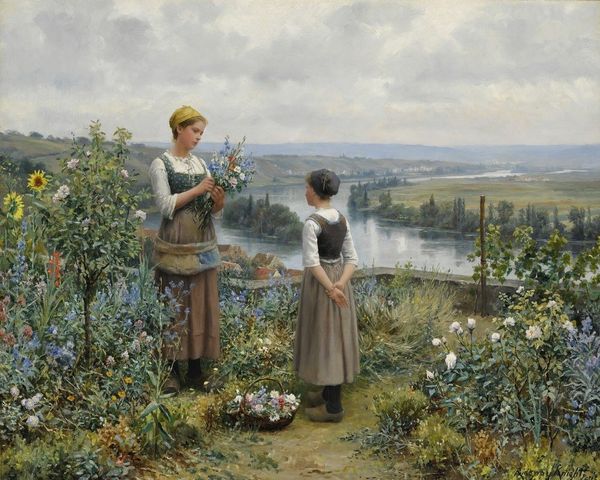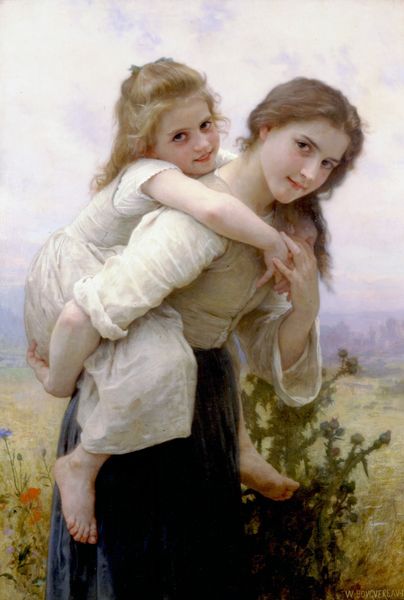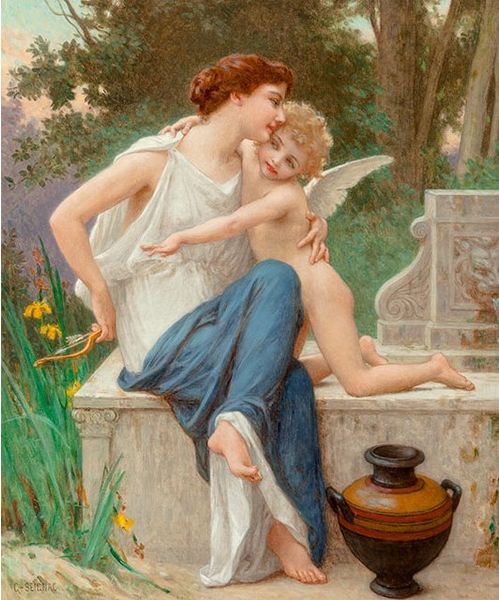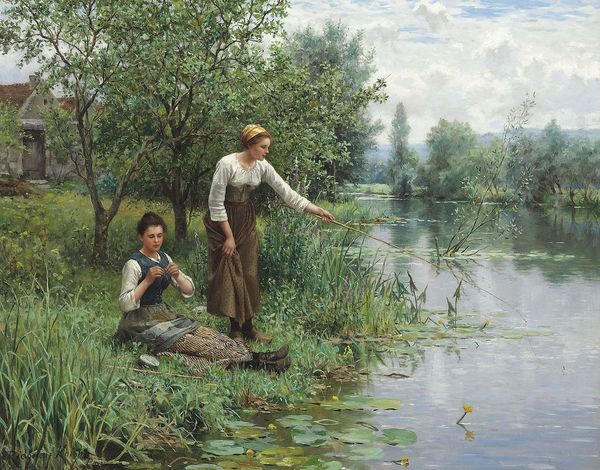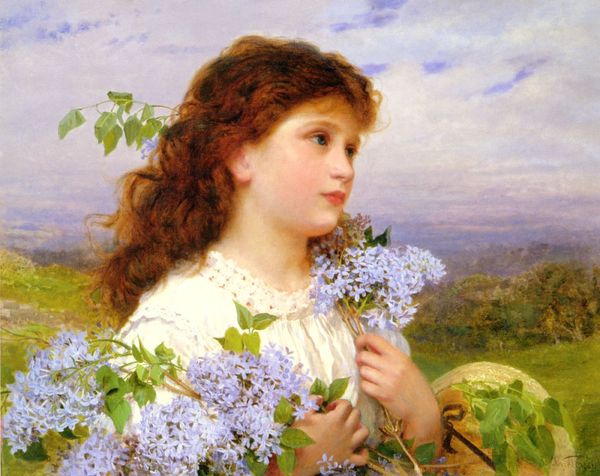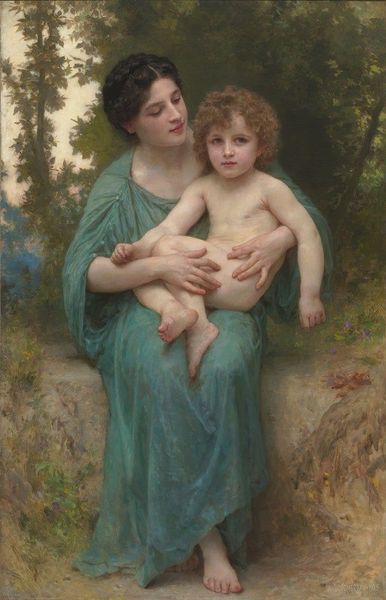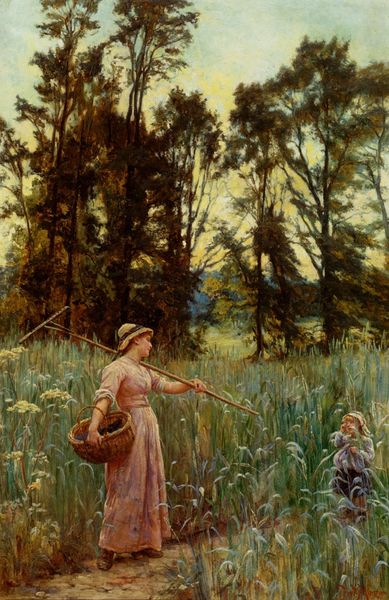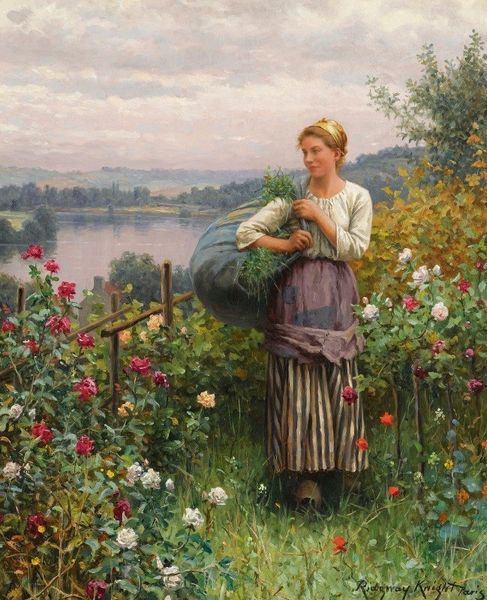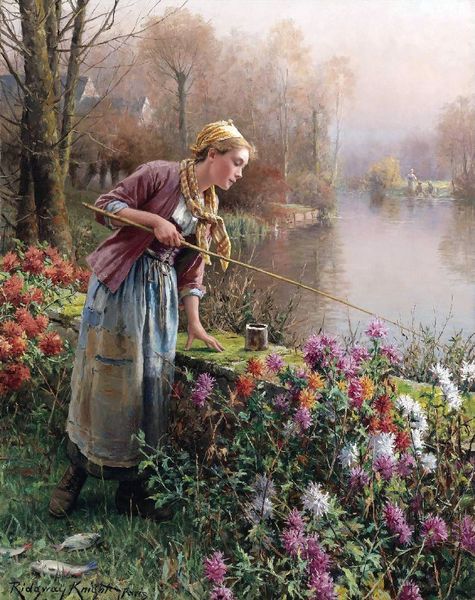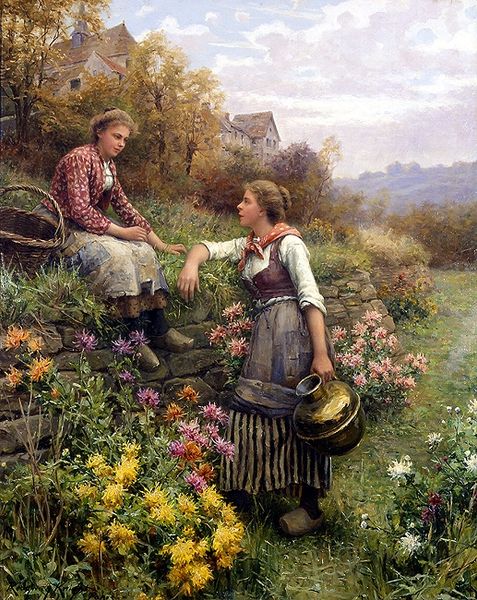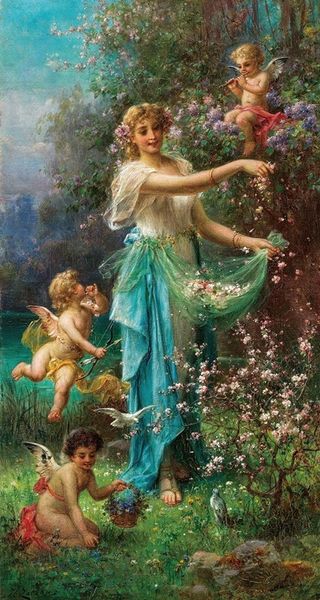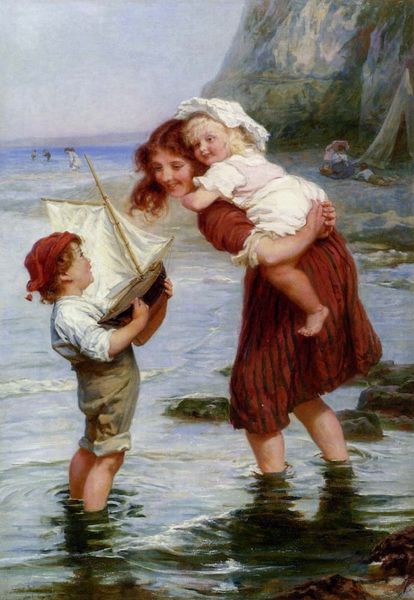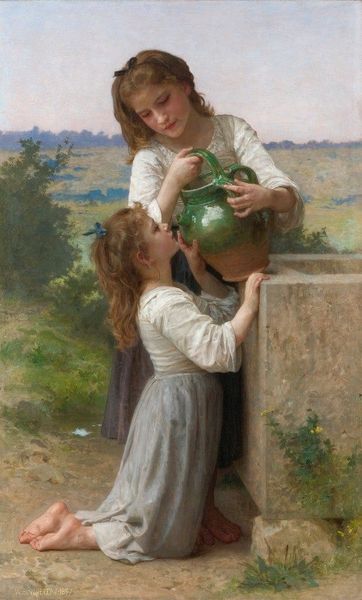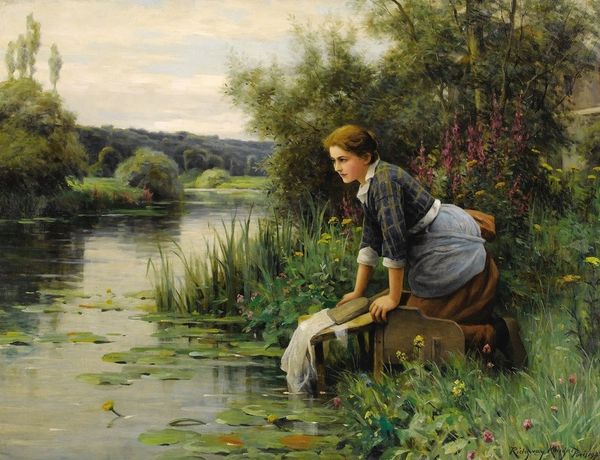
Copyright: Public domain
Curator: Standing before us is Mildred Anne Butler's "A Mother and Child by a River, with Wild Roses," painted in 1919. Butler, renowned for her plein-air technique, captures an intimate moment en plein air. Editor: There's a tenderness here. A gentle, almost dreamy quality pervades the scene. The roses seem to almost glow in contrast to the softer lines of the women. Curator: Precisely. Butler's focus extends beyond mere representation; it delves into the emotional fabric of motherhood. Consider the oil paint application – thick in areas, particularly in the foreground flora, creating textural richness that speaks to the very process of observing and capturing nature. And do you observe the river here as a major actor and almost a divine presence within a humble humanized moment. Editor: The river! It reflects a world above. Its placement is significant, representing constant cycles. The roses as you hinted though--they represent something quite symbolic of youth in transition here as well. Their fleeting beauty speaks to fragility. Are those roses representative of that temporal, passing youthful existence? The mother looking intently seems aware. Curator: But the flowers might hint to the production and craft inherent in cultivating even wild roses. These aren't merely objects of beauty; they are products of the natural world worked on by unseen forces—much like motherhood itself. What labor produces such a perfect portrait? The roses were in abundance after the conclusion of a World War, so could they also symbolize regrowth and rebirth after immense loss? Editor: That's a beautiful addition! This painting truly acts as a symbol of domestic solace in the midst of social upheavals. Notice also the subdued color palette. Nothing feels too jarring or attention seeking; it encourages the observer to soak up every visual offering! Curator: And the way Butler handles the material creates an atmosphere. The slight impasto gives weight to the flowers, highlighting how physical materials are vital in capturing a feeling as ephemeral as maternal love. The materials used— the weave of the canvas, the pigmentation in the paints -- all are commodities of artistic making in that sense too. Editor: It's fascinating how you point out these more objective facets as essential rather than complementary elements in grasping the painting’s emotive dimensions! After closely scrutinizing this canvas, I believe that the child seems suspended from the weight of her innocence and impending adulthood while the mother is completely present. Curator: Well, perhaps both material and symbol unite in Butler's vision; one supports and shapes the other, resulting in the compelling romantic view before us. It seems it gives much in each regard, I'll be thinking of this synthesis from now on.
Comments
No comments
Be the first to comment and join the conversation on the ultimate creative platform.
